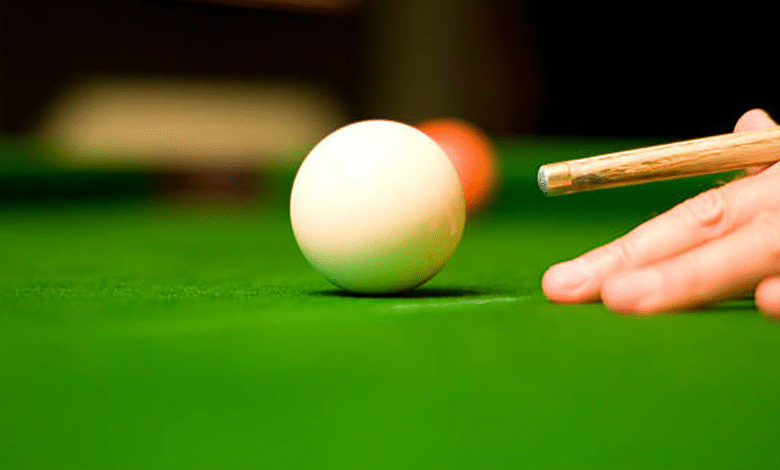The Art of Touch: Feeling Over Force in Snooker and English Pool

There’s a certain poetry in watching a great snooker player at work. The way they feather the cue, pause for half a heartbeat, and then send the cue ball gliding across the cloth like silk over ice. It’s not about brute force. It’s not about fancy spins or heavy shots. It’s about feeling—that almost invisible connection between player, cue, and cue ball that separates the good from the great.
However, “feeling” is often overlooked by many amateur players. They might spend hours watching fancy shots, buying shiny new balls, or arguing about chalk brands—but they neglect the key to truly defining a player’s touch: the cue and the hand holding it.
The Secret Language Between Cue and Player
Every cue tells a story. Weight, balance, grain, even the sound of impact—all of these convey subtle messages to the player. When you pick up a cue that suits you, it seems to come alive in your hand. It reacts, guides your shots, and communicates with you.
That’s why experienced players treat their cues as trusted partners, not just tools. It’s about the personal experience. The billiard cue you use affects everything—from the accuracy of your shots to your confidence under pressure.
Think of it like driving a car: when the steering is just right, you stop thinking about control and start enjoying the road. The same goes for cues—when you find the perfect one, you stop overthinking your shots and start playing naturally.
The True Meaning of “Feel” in Billiards
Feel isn’t magic—it’s a combination of physics and instinct. It refers to how the pool cue reacts when you hit the cue ball slightly off-center, how the feedback travels along your hand, and how your body adapts over time.
Balance point, cue tip hardness, and cue shaft stiffness all play important roles. For example, a slightly lighter cue allows for better control of delicate contact—crucial for snooker’s slow-rolling safety play. A heavier cue provides more power for the shot in English billiards.
But feel isn’t just about weight or numbers—it’s about connection. The best cue for you isn’t necessarily the one with the highest price tag, but the one that feels right when you take your stance and trust your shot.
Why Many Players Struggle to Find “The One”
Most players are reluctant to admit that the wrong cue stick can silently hinder your progress. You might blame your posture, lack of concentration, or even bad luck—but deep down, something always feels off.
If your cue is too stiff, every shot will feel harsh. If it’s too soft, you’ll lose control. If your balance is poor, your stroke will never be smooth.
No wonder many players say their early cue learning journey was frustrating—because without the right feel, playing billiards is like climbing a steep mountain.
The Emotional Side of Feel
Ask any experienced snooker player what they love most about the sport, and they’ll rarely talk about trophies or perfect shots. They’ll talk about the clean, crisp feel of the shot—the crisp “click” of the snooker cue hitting the cue ball, the soft roll of the cue ball into the pocket, and the silence before the audience’s reaction.
That’s the moment every player strives for. And it’s only possible when your pool cue stick and your heart are perfectly in sync. When your cue feels like an extension of your body, every shot becomes a small expression. You’re not just playing a game—you’re painting, composing, creating.
Improving Your Touch: From Frustration to Fluidity
Developing feel takes time and patience. You can’t master it in an afternoon of practice—it requires repeated practice, reflection, and precise control of subtle movements.
Here are some ways to strengthen your connection with your billiard cue:
- Slow down your practice.Focus on precision over power. Notice how the cue ball reacts to soft and medium-strength shots.
- Listen to feedback.The sound of impact tells you as much as the result. A solid “click” means clean contact; a dull thud suggests a mishit.
- Try different stances and grips.Sometimes, adjusting your bridge or loosening your hold makes all the difference.
- Trust your instincts.Overthinking kills rhythm. Feel thrives when your mind is quiet and your body leads.
As you improve, you’ll notice something fascinating: the billiard snooker cue starts “talking back.” You’ll sense when to add a touch of spin or when to hold back. That’s when you know you’re truly playing with feel.
When Feel Becomes Flow
Snooker and English pool aren’t just sports—they’re conversations between wood, cue ball, and human touch. A well-made cue stick isn’t a luxury; it’s your voice on the pool table.
Once you find your rhythm and trust your cue, everything changes. The game slows down. The noise fades. You’re no longer fighting the table—you’re dancing with it. That’s the beauty of feel. It’s invisible to spectators, but it’s everything to the player.
So, if you’ve been struggling to find your consistency or confidence, maybe it’s time to look beyond your technique. Maybe the answer lies in the cue you hold—and the story it wants to tell.


